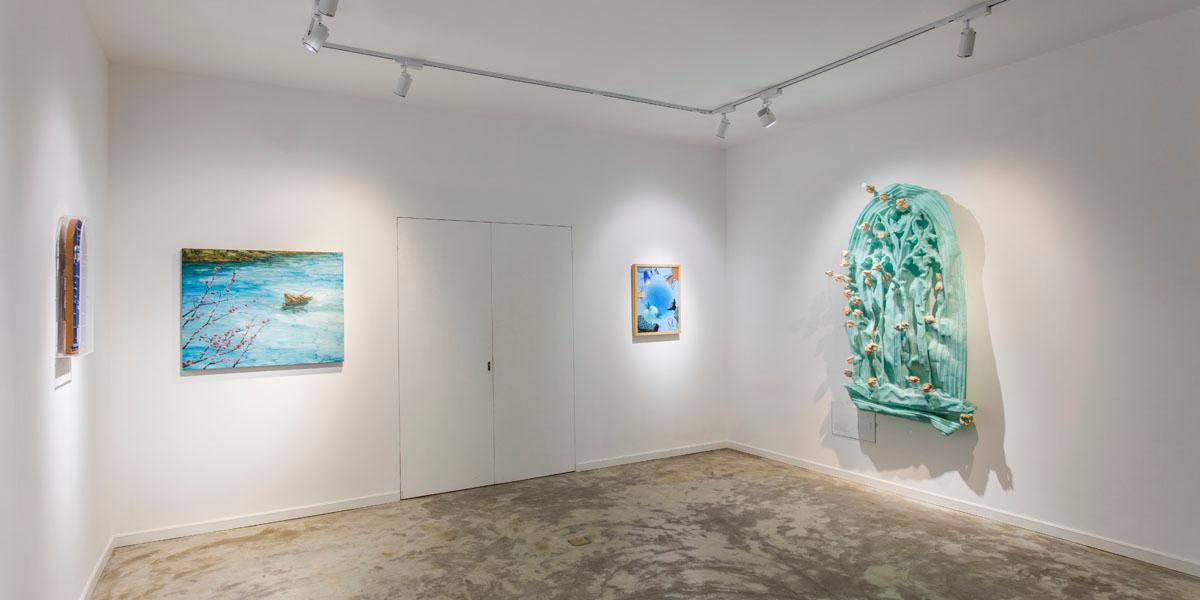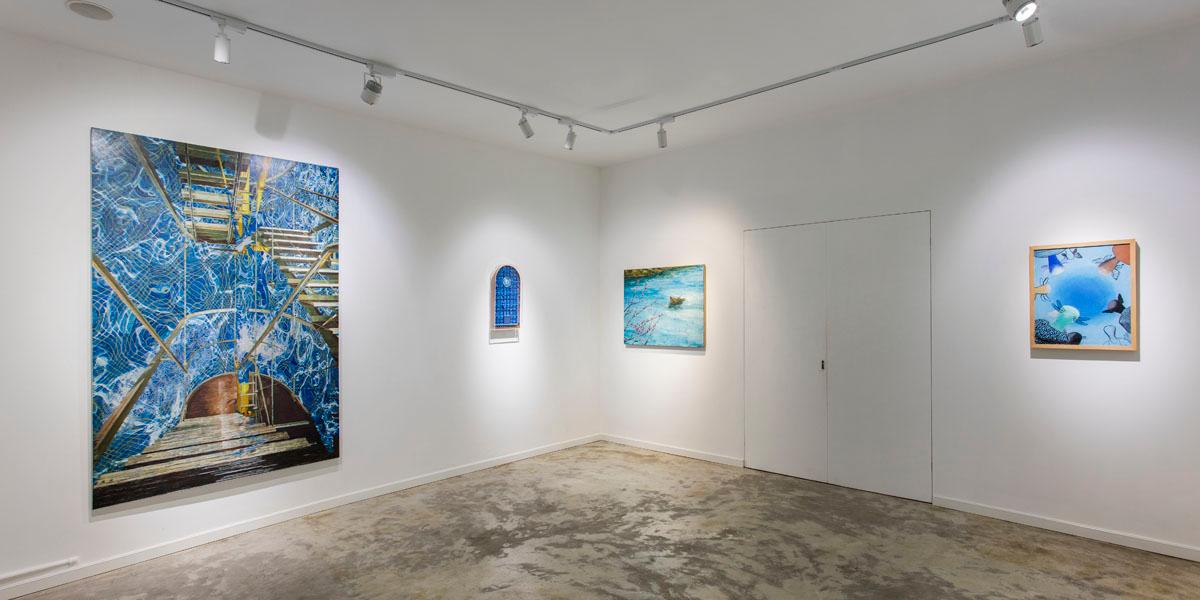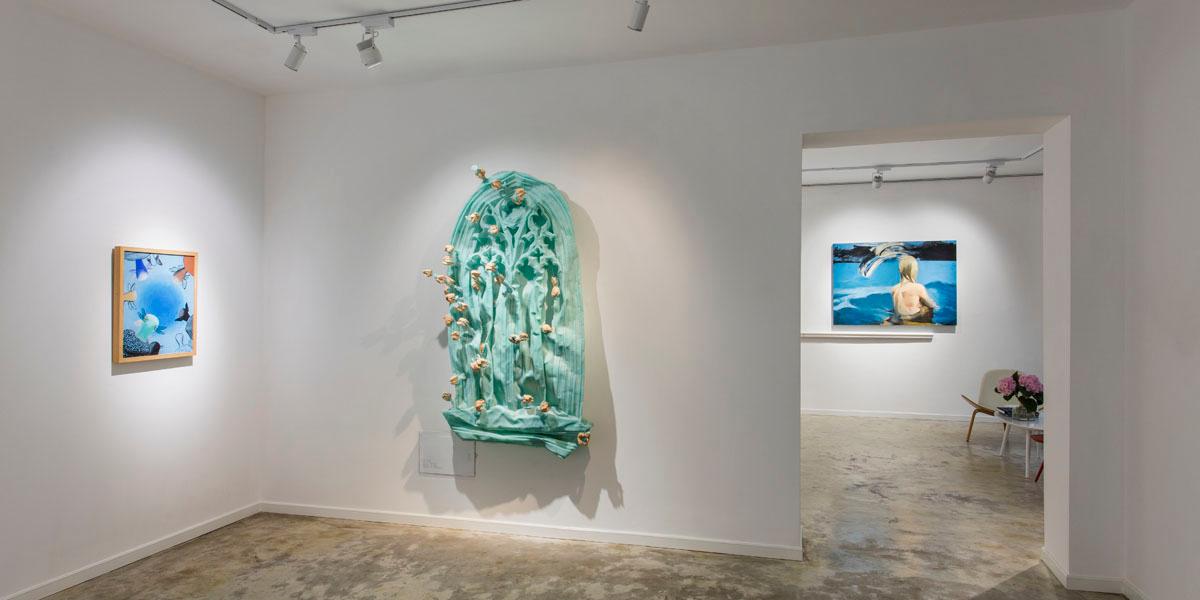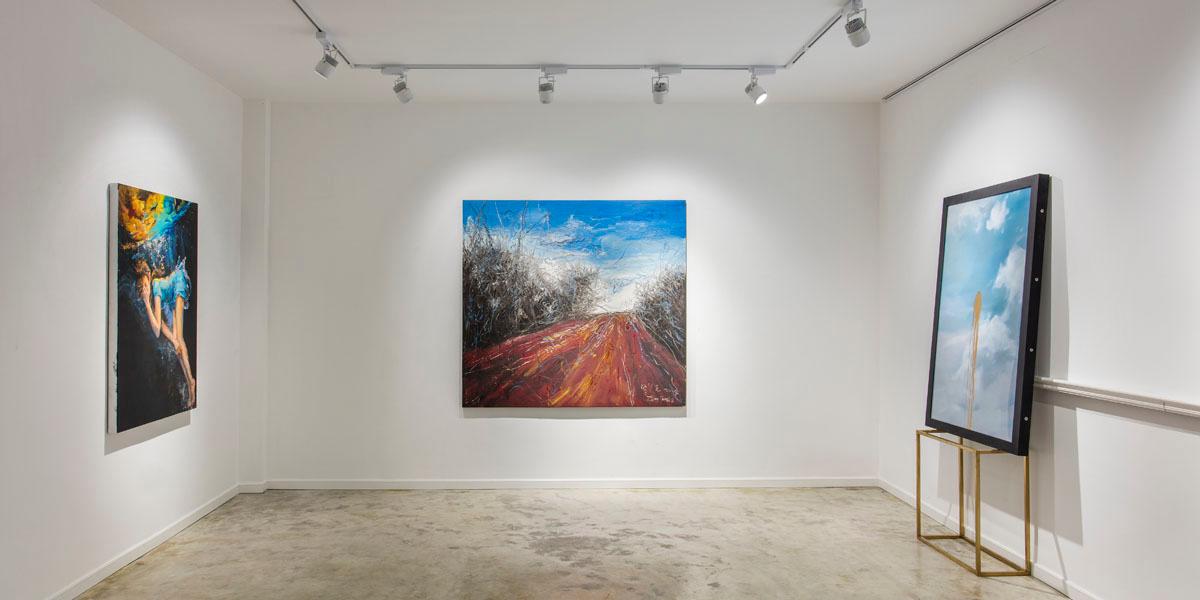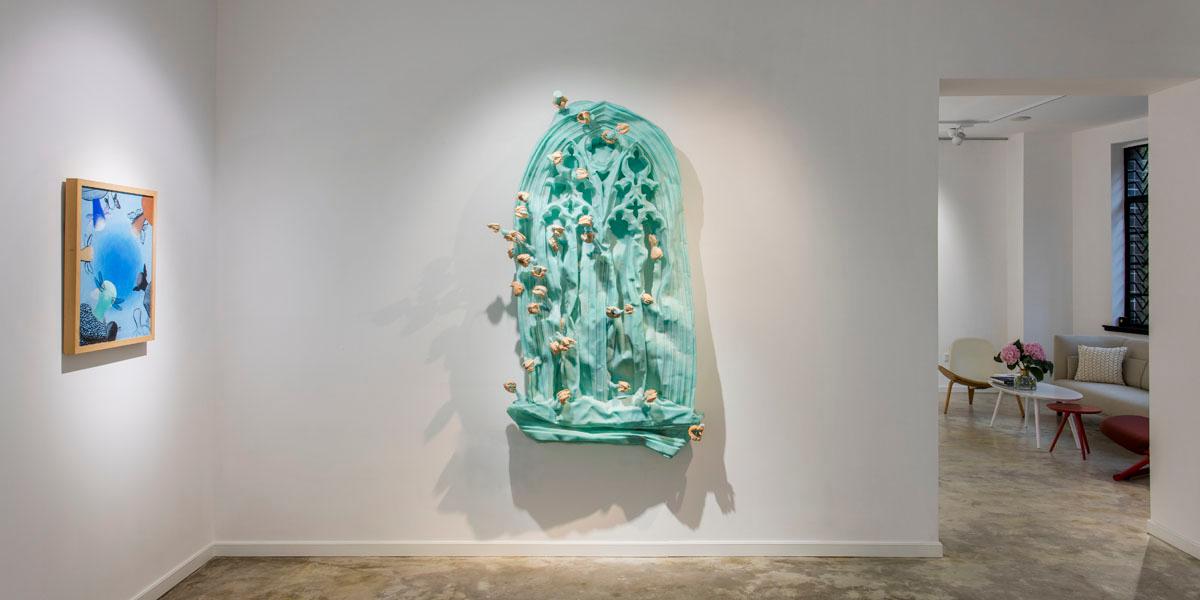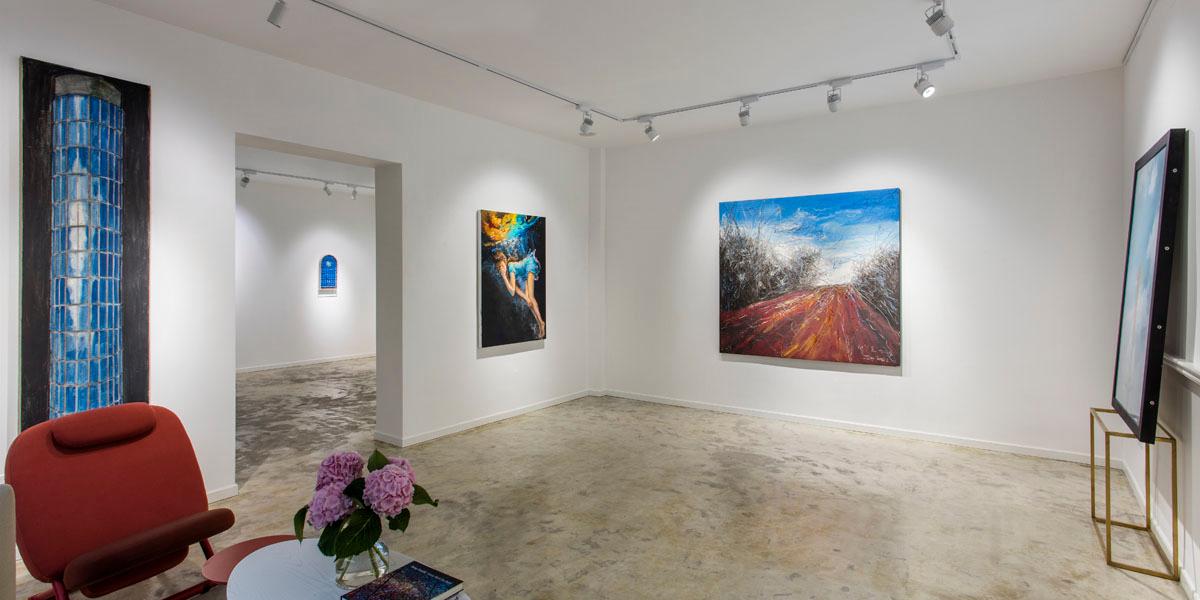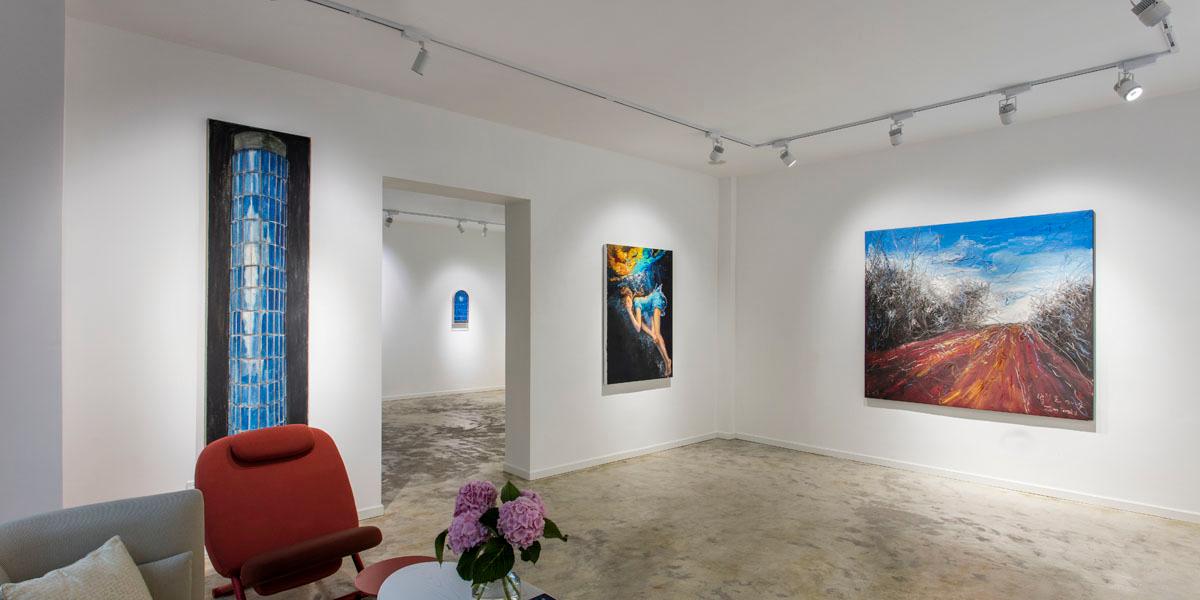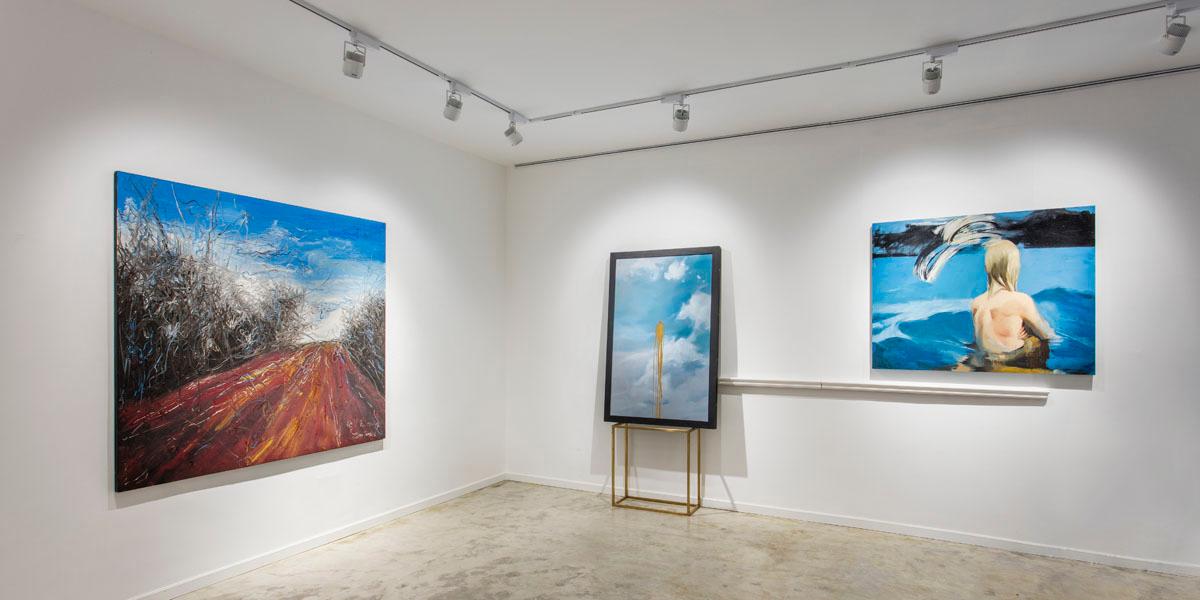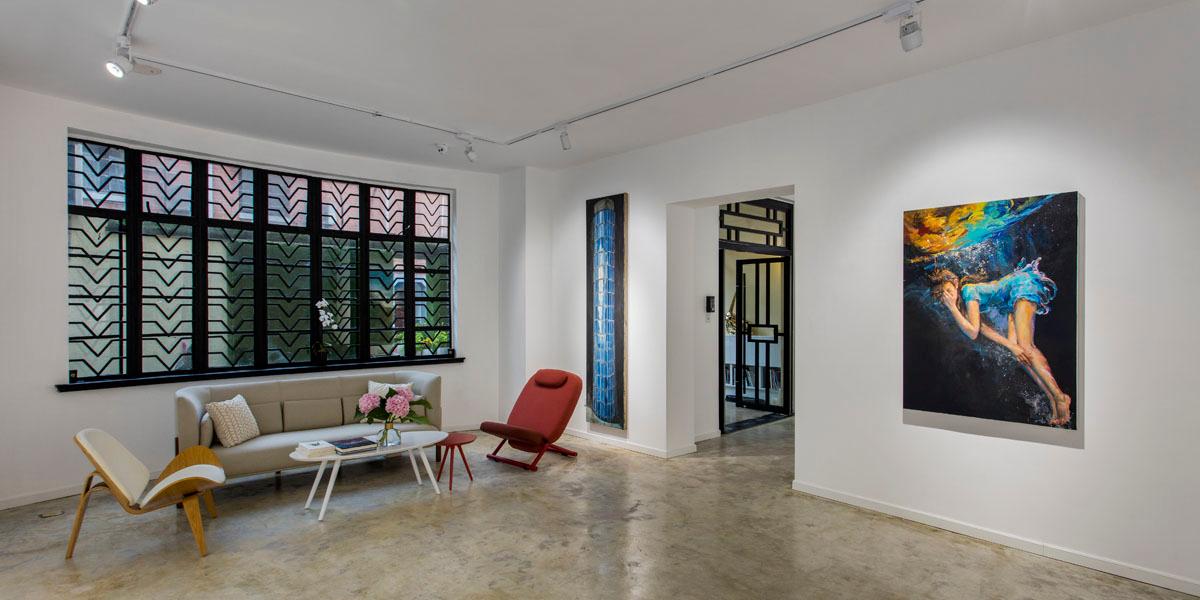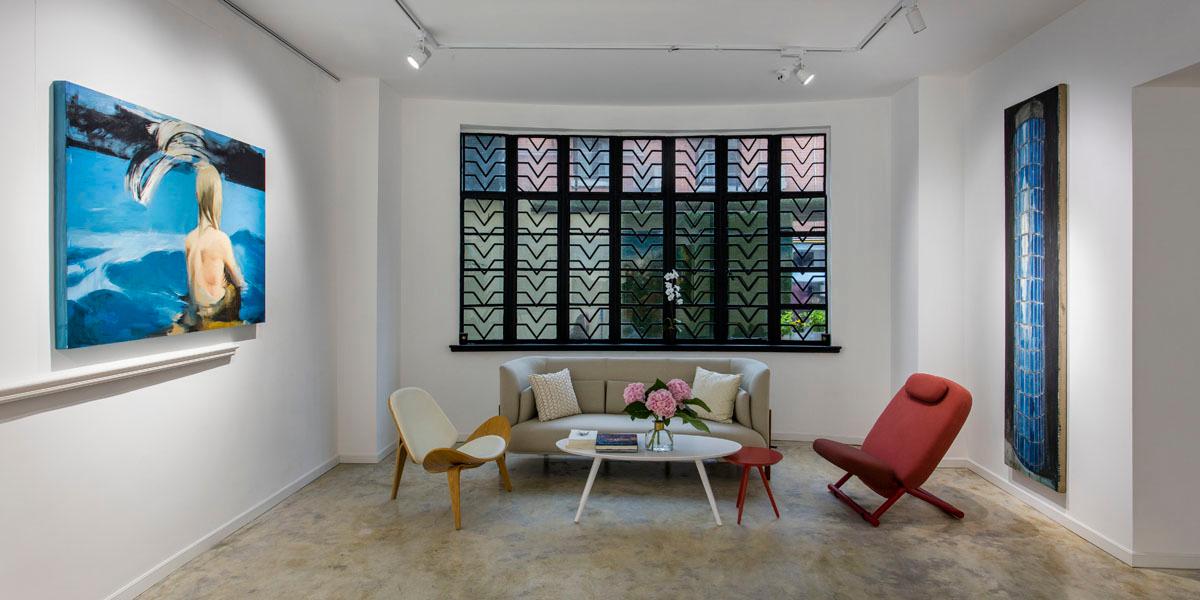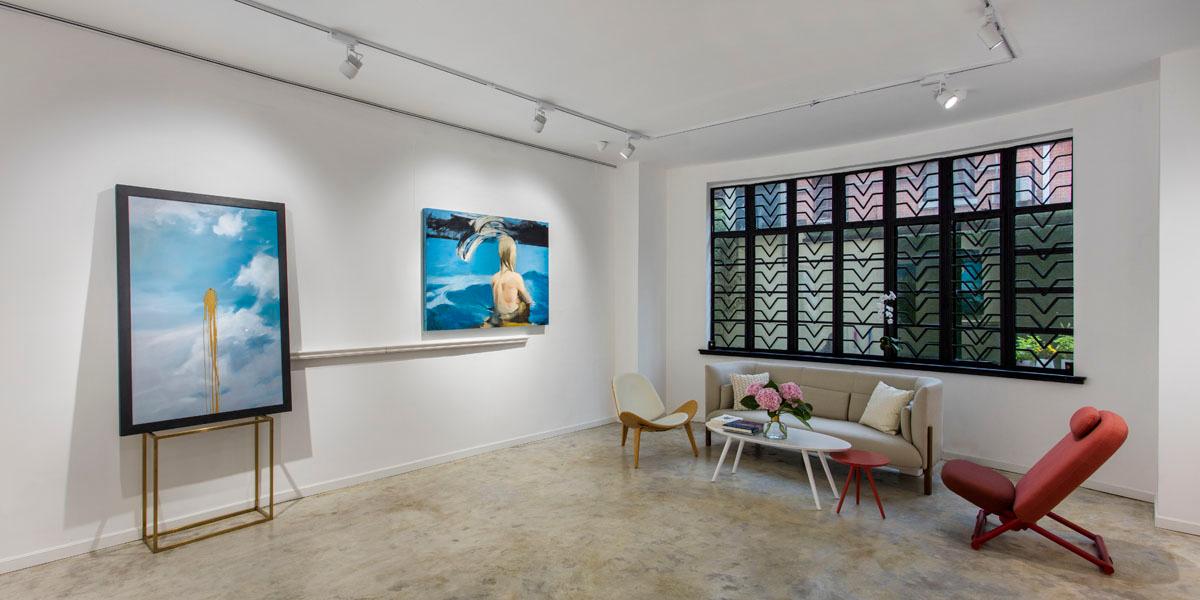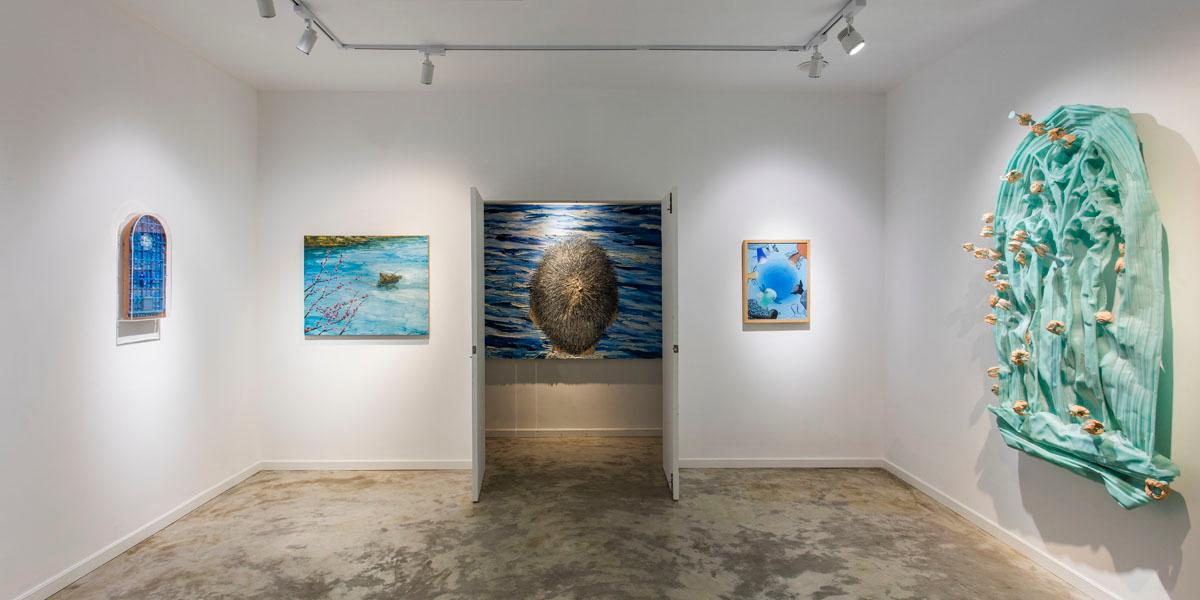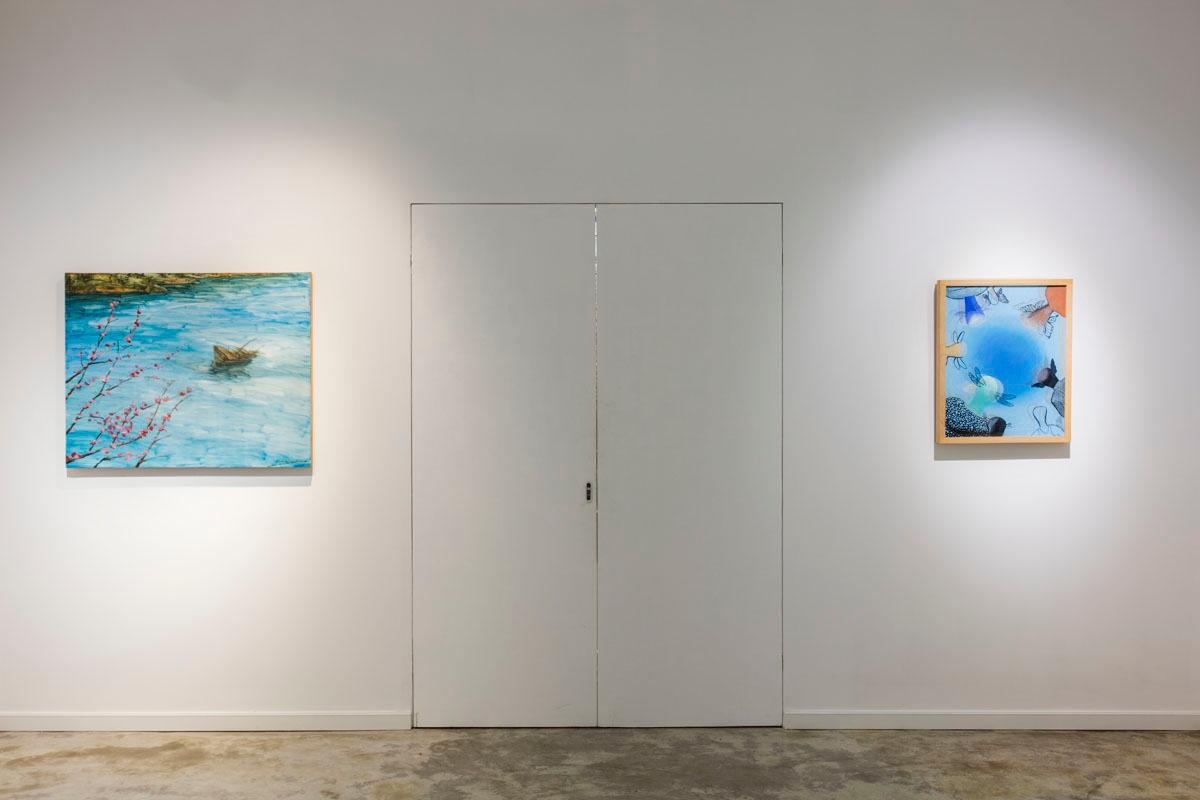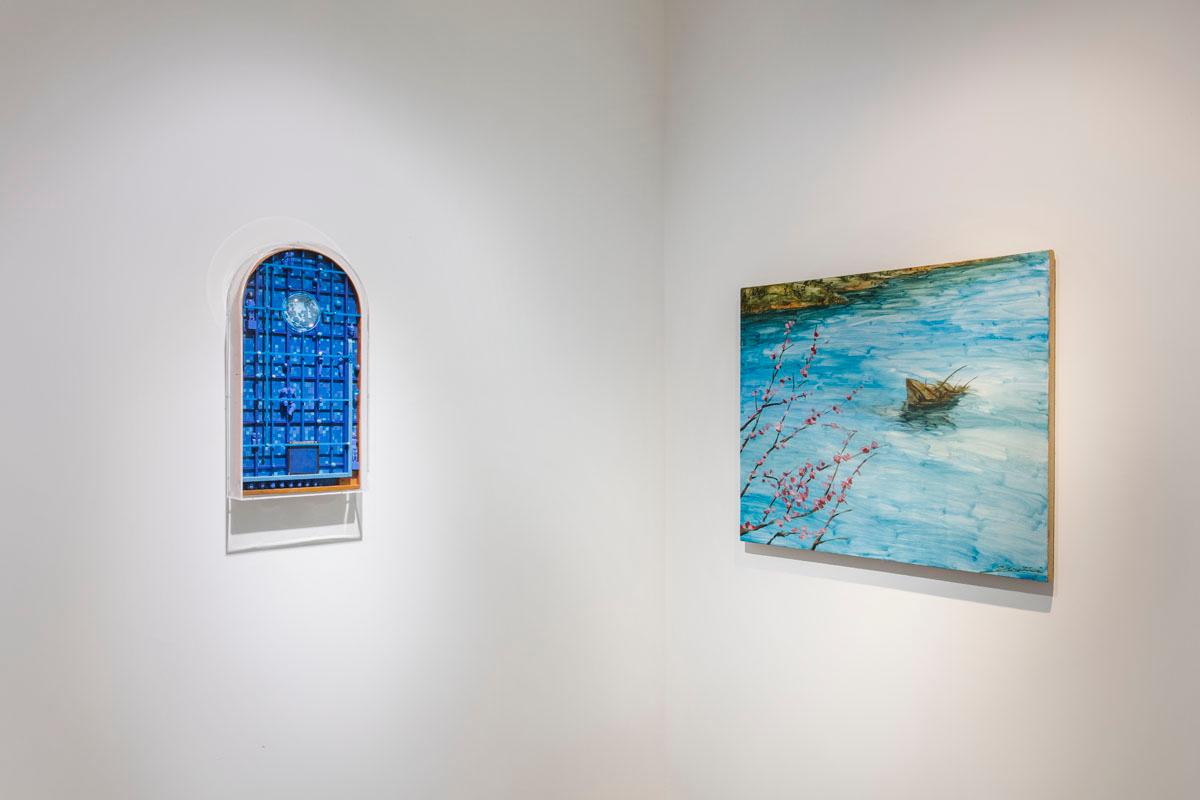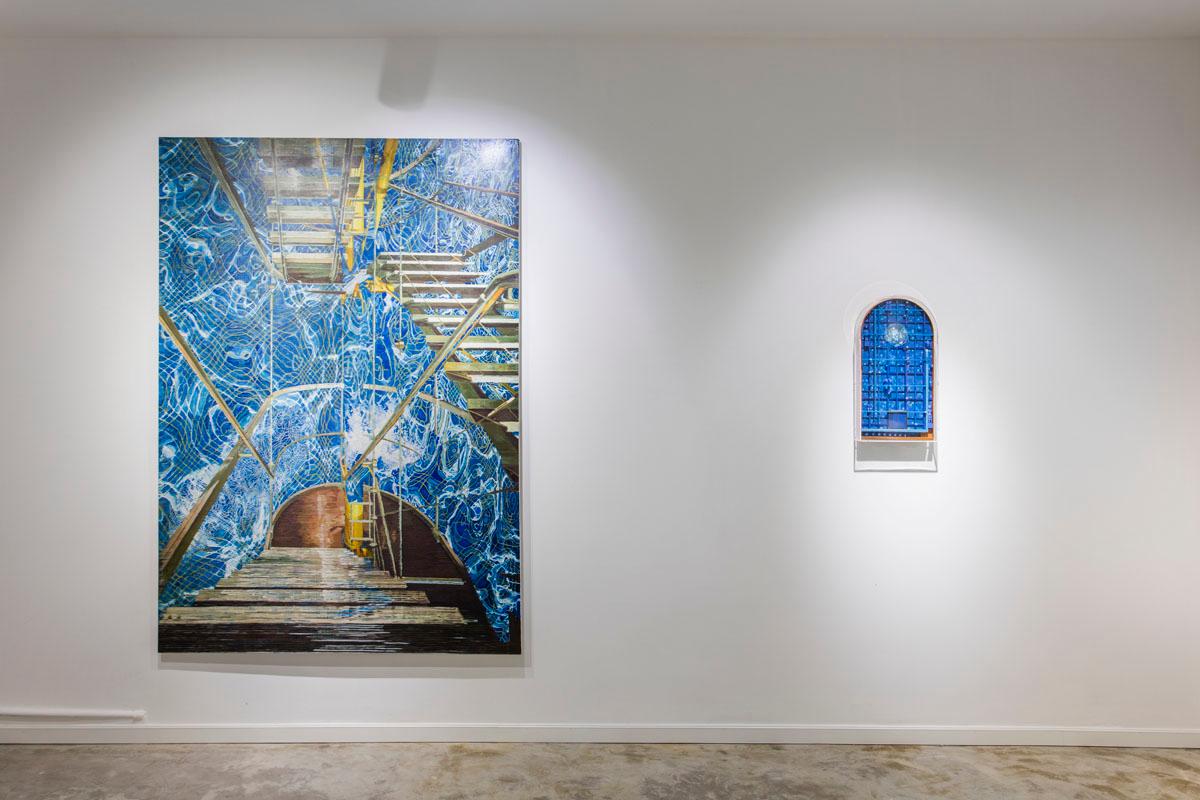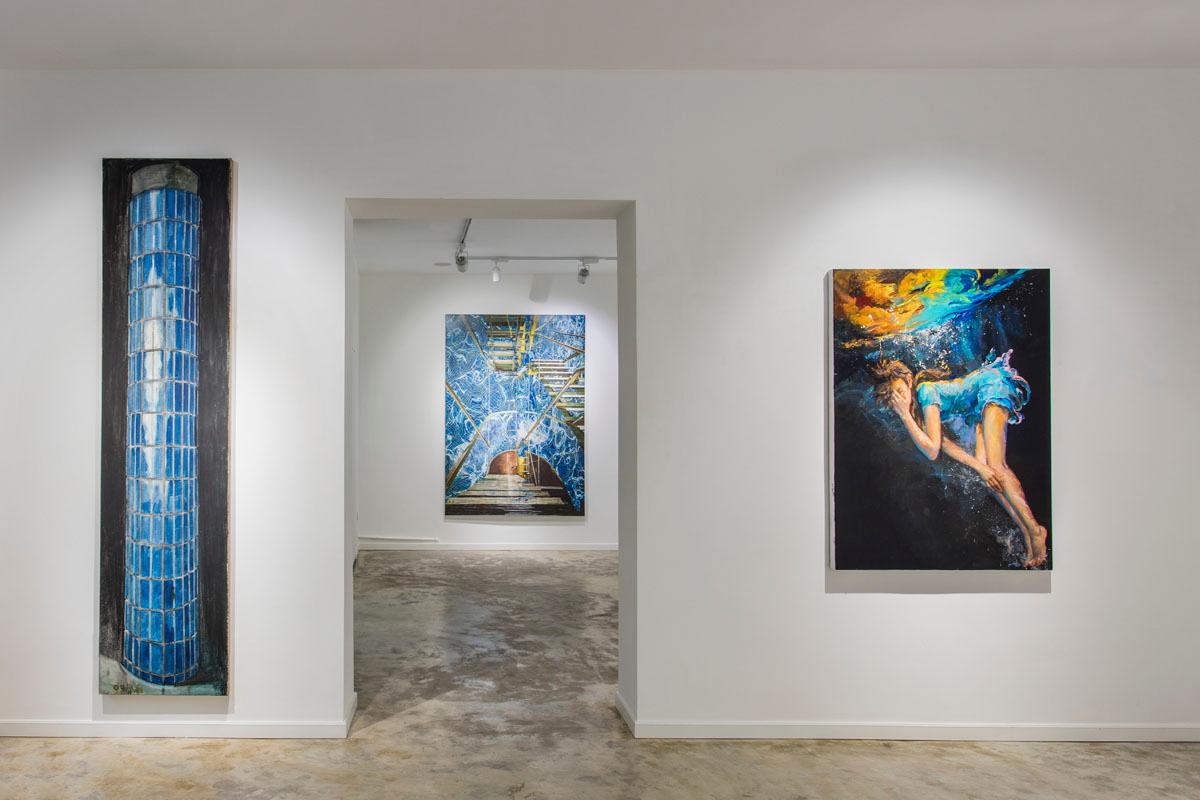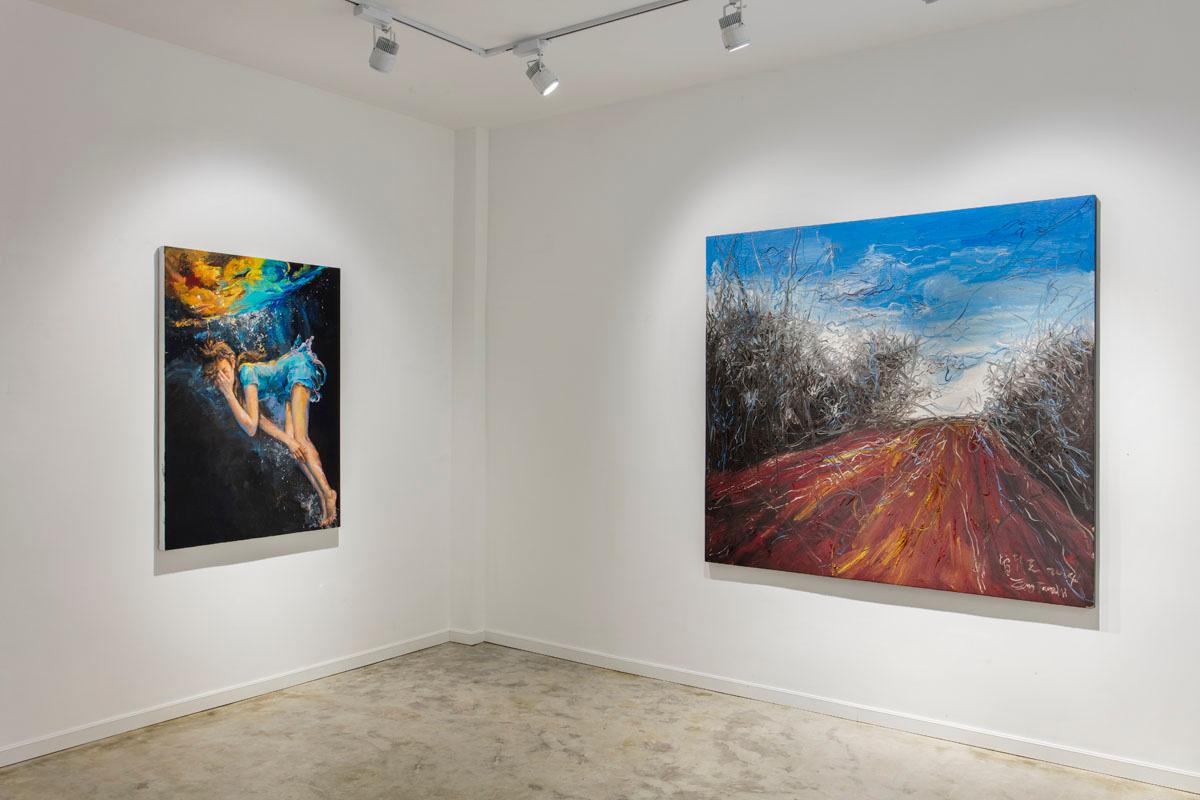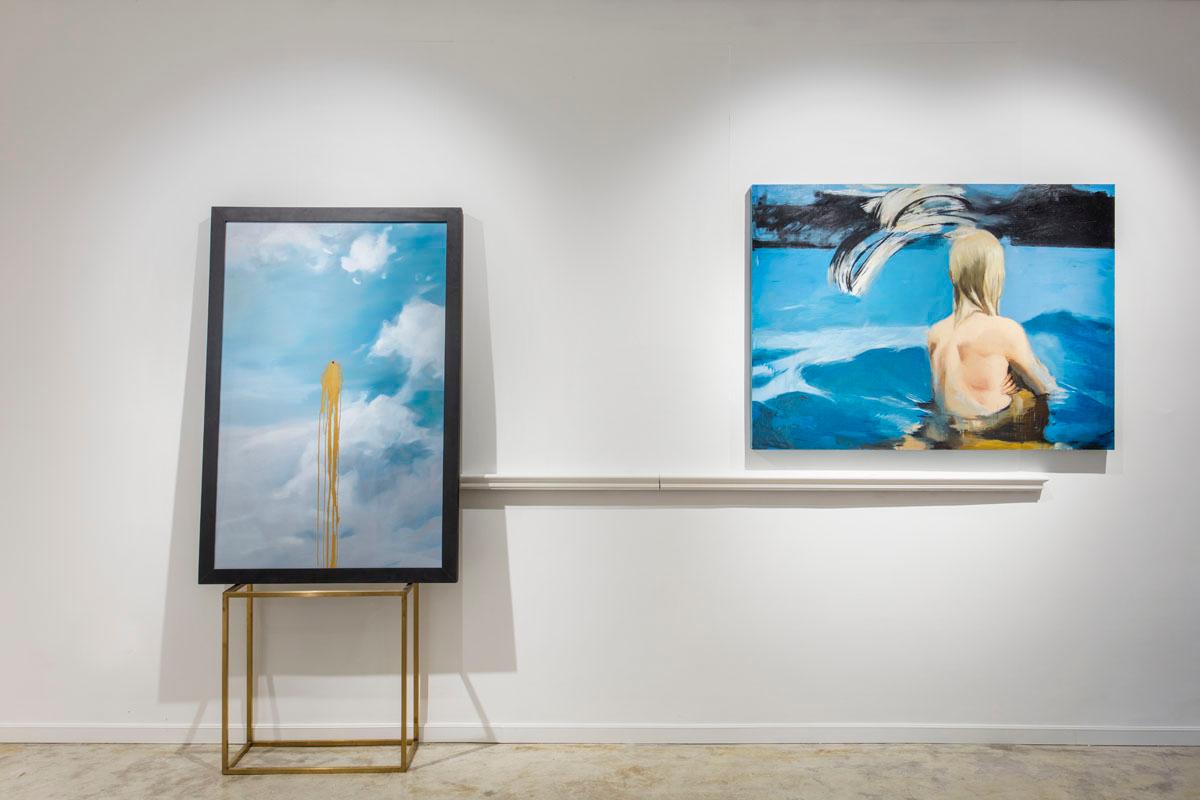166 ART SPACE is pleased to present “The Blues,” an exhibition of works by Gao Weigang, Jin Shan, Li Shan, Ni Youyu, Ouyang Chun, Wang Jia Xue, Wu Di, Yuan Yuan, Yu Hong, Zeng Fanzhi, Zhang Enli, and Zhou Zixi.
The color blue, at its most primary and visceral level, has held a certain significance to artists throughout the ages. During the first half of the 20th century there was Picasso’s “Blue Period” (1901-1904), and many years later Yves Klein’s ultramarine Blue Venus and his blue female body prints in the now readily recognizable “International Klein Blue” or IKB as it was dubbed. There are the reductive, midnight blue monochromatic works by American abstract painter Ad Reinhardt, referring to his influential works as the “ultimate painting” or “last paintings anyone can paint.” When we think of the color blue our natural, elemental world springs to mind: deep blue ocean vistas and clear blue, cloudless skies.
Then there is the blues, as in blues music forged by black American voices toward the end of the 19th century in the rural south of the United States—songs of anguish, sorrow, resistance, love, longing, desire. As the prominent black American philosopher and social critic Cornell West states: “I’m a bluesman moving through a blues-soaked America, a blues-soaked world, a planet where catastrophe and celebration—joy and pain sit side by side. The blues started off in some field, some plantation, in some mind, in some imagination, in some heart. The blues blew over to the next plantation, and then the next state. The blues went south to north, got electrified and even sanctified. The blues got mixed up with jazz and gospel and rock and roll.”
Featured in “The Blues” are twelve artists from the collection—from the already long-established to the emerging—in which a dominant color is not only commonly shared, but becomes an expressive, connective component to the emotional power in each of their works. Within the context of the exhibition all of the works could perhaps call to mind some of the great blues songs throughout its musical history. Zeng Fanzhi’s painting Countryside No. 5 (2004) with its tangled pathway leading to a patch of open sky might make us think of Robert Johnson’s 1936 classic “Crossroads” or Yuan Yuan’s painting Dream Liner 5 (2011) with its disorienting view of the bow of the Titanic plunging into icy waters might remind us of St. Louis bluesman Henry Brown’s 1932 “Titanic Blues”:
It was early one morning at about four o’clock,
When the old Titanic began to reel and rock.
Captain Smith took his glasses and walked out to the front,
And he spied that ‘berg a coming’ full ahead to bump.
Some was drinking, some was playing cards,
Some was in the corner praying to their God.
Songs of disaster as well as salvation, songs that bring us strength to overcome the murky depths of depression. In Yu Hong’s Celestial Body (2014) a woman chooses an underwater world as her place of solace or perhaps the place for her tragic demise. Maybe she’s simply taking a swim. Her story feels slightly ambiguous. But this ambiguity combined with Yu Hong’s extraordinary brushwork is precisely what makes the work so compelling. Only the upper portion of the painting with its vibrant yellow swirls suggest an optimistic outcome. Jin Shan’s new work, a contorted fiberglass cathedral window with protruding dental casts of clenched, angry teeth might imply the unending conflicts between spirituality and the tyranny of fundamentalism. One might say intolerance also gave birth to the blues.
Over time the blues evolved to bear witness in song, giving meaning to the plight of human suffering as well as celebrate the joy and triumph of the what we call our human condition. And isn’t this a part of what all great art is supposed to do?
166艺术空间荣幸推出艺术家群展“蓝”,参展艺术家包括高伟刚、靳山、李山、倪有鱼、欧阳春、王佳雪、吴笛、袁远、喻红、曾梵志、张恩利、周子曦。
蓝色蕴含的最原始直觉的感受对古往今来的艺术家都有着重要意义。二十世纪的上半叶,毕加索创作风格进入他的蓝色时期(1901-1904),这之后的伊夫· 克莱因的深蓝色的“蓝色维纳斯”和他用女性人体绘画创造了“国际克莱因蓝”(简称IKB),美国抽象派艺术家 阿德·莱因哈特(Ad Reinhardt)所绘的如同午夜般凝重的蓝色单色画,被称作“绘画之极”,“人类最后的绘画”。每每想到蓝色,我们头脑中首先涌出的词汇都是与地球初始的大自然相关的:深蓝的大海,一望无际的蓝天。
然后有了蓝调,来自美国南方乡间的黑人音乐家在19世纪末期创作的音乐,代表愤怒、悲怆、反抗、爱情、希望的蓝调音乐。正如著名的美国黑人哲学家、社会批评家Cornell West的所言:我是一名浸淫在蓝色情调中的美国,四处游荡的蓝调人,世界浸泡在伤感中,灾难与欢庆,喜悦与痛苦并肩同行。蓝调起源于某一片田野,某一个庄园、某一个人的脑海中,某一种想象间、某一个人的心怀里。蓝调从一个庄园传到下一个庄园,再飘到下一个州,从南方到北方,被电击被圣化,蓝调融合进爵士乐、教堂颂歌以及摇滚乐。
展览“蓝”包括的是从这里藏品中挑选出来的十二位艺术家的作品,从资深成熟艺术家到初露头角的年轻艺术家。这里蓝色不仅是所有作品共同分享的特点,它也是连接起每一件作品内在的情感力量的突出表达。展览上的每一件作品或许都可以唤起音乐历史长河中最优秀的蓝调音乐曲目:曾梵志的作品《郊区5号》(2004年)描绘的通向辽阔天空的崎岖小路或许让我们联想到Robert Johnson1936年的经典曲目《交叉口》;袁远的作品《梦幻客轮》(2011年)描绘的泰坦尼克号沉入冰海时错位的视角也会让我们想起圣路易斯的蓝调音乐家Henry Brown 1932年的曲目《泰坦尼克蓝调》:
天色尚早才清晨四点
泰坦尼克开始摇摆震荡
斯密斯船长拿起眼镜走到船头
他看到船与冰山迎面撞上
有人在喝酒,有人在打牌
有人在角落里祈祷上帝
灾难的歌,也是救赎的歌,音乐给我们力量,带我们从沉重的黑暗走出。喻红的作品《天体》(2014年),画了一位女子选择在水下世界寻求慰藉,或者水中是她悲剧性死亡的场所,或者她只是在水里游泳罢了…一个模糊的故事,而喻红留在画面上的绝妙笔触让这种模糊变得无可抗拒,唯有画面上方绚丽的黄色漩涡带来一种乐观的心绪。靳山的新作是一件用塑胶浇铸的变形的教堂窗户,作品上面附着的愤怒的紧咬的牙关模型似乎在影射精神灵性与极端主义专制之间永无止境的对抗。可以说无法忍受也催生了蓝调的诞生。
长久以来,蓝调成为凝固在歌声中的证人,为人类的苦难填充意义,也为我们人性处境中的喜悦与胜利而欢庆,这不正是所有的伟大的艺术责无旁贷的使命之一吗?

